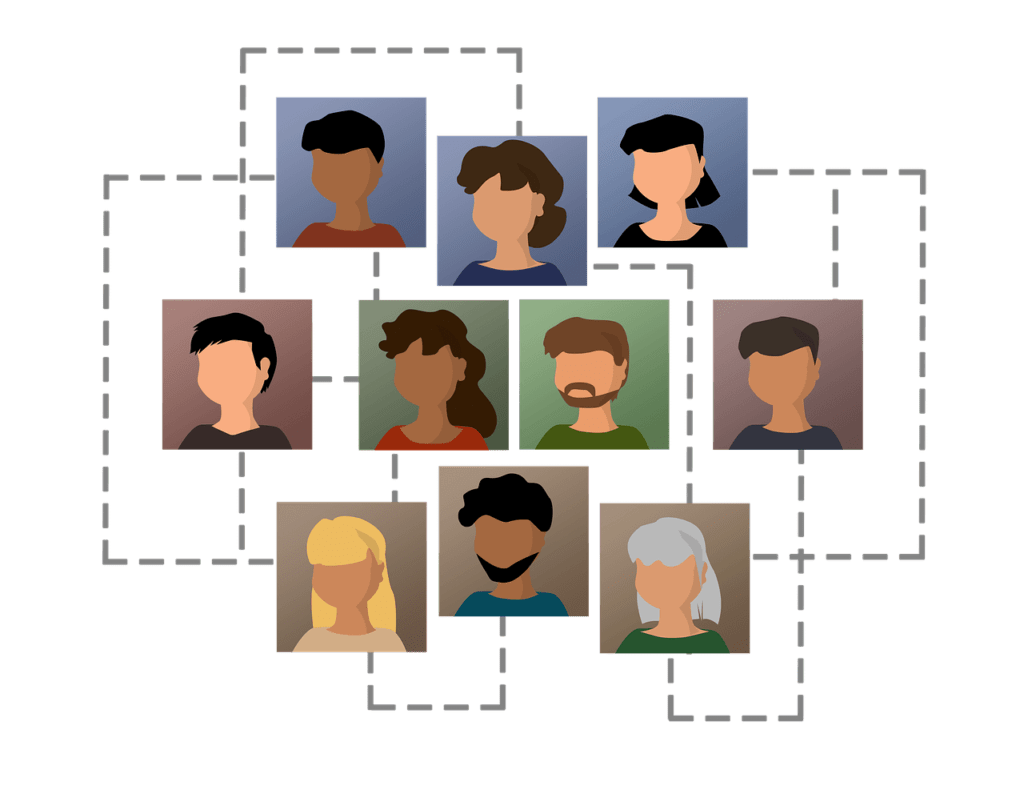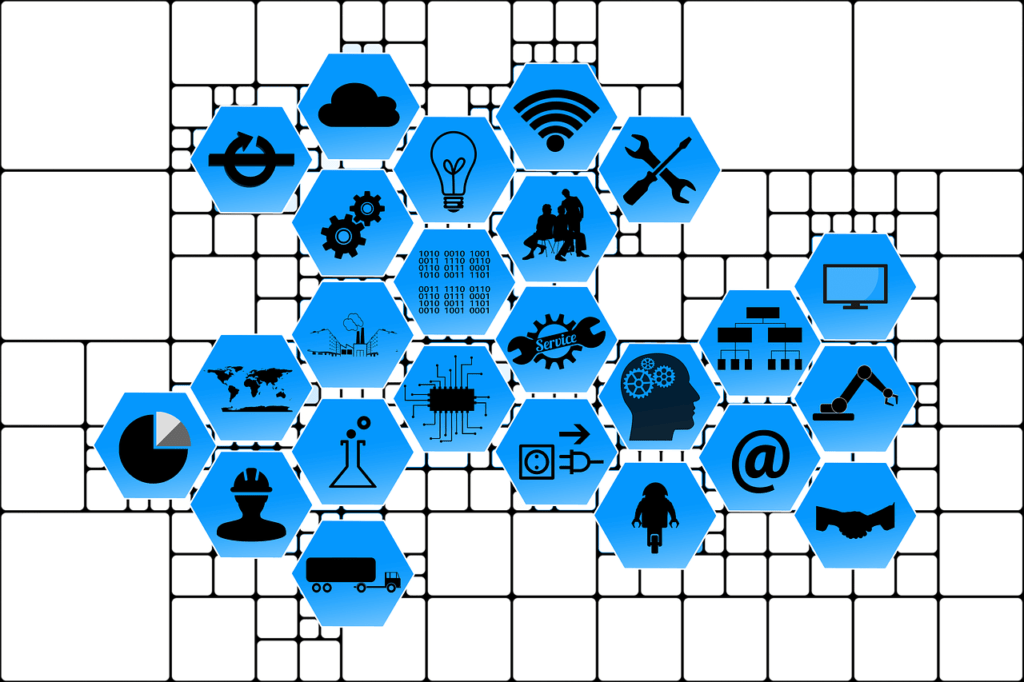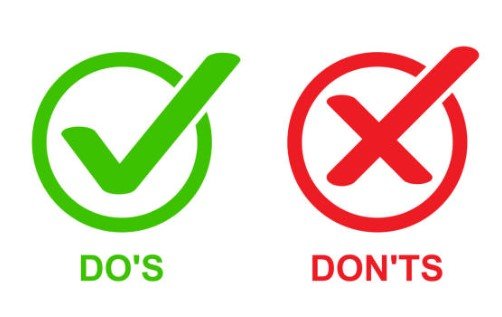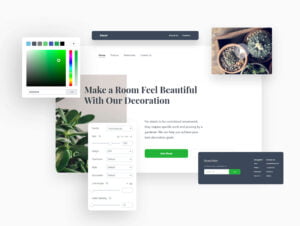100+ Best Networking Icebreakers to Kickstart Meaningful Conversations in 2024
100+ Best Networking Icebreakers to Kickstart Meaningful Conversations in 2024

Networking events can be daunting, but they’re essential for building professional relationships and expanding your horizons.
Ever been to a networking event and found yourself at a loss for words?
Icebreakers are your secret weapon. They help you start conversations, ease the tension, and create a more engaging atmosphere.
Let’s dive into the world of networking icebreakers and discover how they can transform your networking experiences.
Understanding Icebreakers
So, what exactly are icebreakers?
They’re simple questions or prompts designed to kick off conversations.
The goal is to ease any initial awkwardness and pave the way for more meaningful interactions. Think of them as the opening act that sets the stage for a great performance.
Preparation Before Networking
Before you even get to the event, a little preparation can go a long way. Here are a few steps to ensure you’re ready to make the most of your networking opportunities:
Researching the Event
Know the event’s agenda and the kind of people who will be attending. This knowledge will help you tailor your icebreakers to the audience.
Setting Personal Goals
What do you hope to achieve at this event? Whether it’s meeting potential clients or simply expanding your network, having clear goals will guide your conversations.
Being Approachable and Confident
First impressions matter. A warm smile and confident posture can make you seem more approachable. Combine this with a well-prepared icebreaker, and you’re set.
Classic Icebreakers

“What Brings You Here?”
Simple and direct, this question gets to the heart of why someone is at the event. It’s a great way to understand their intentions and find common ground.
“Tell Me About Yourself”
This open-ended question invites the other person to share their story, giving you plenty of material to build on.
“How Did You Hear About This Event?”
This question is a natural conversation starter and can lead to discussions about mutual connections or interests.
“What Do You Do for Work?”
This is a straightforward question that gets to the heart of most networking events. It opens the door to discussing professional backgrounds and interests.
“Where Are You From?”
Asking about someone’s hometown or origin can lead to discussions about geography, culture, and personal history.
“What’s Your Favorite Part of Your Job?”
This question encourages people to talk about their passions and what they enjoy most about their work, often leading to enthusiastic and engaging conversations.
“What Do You Like to Do Outside of Work?”
Hobbies and interests outside of work can reveal a lot about a person and often lead to more personal and enjoyable discussions.
“How Long Have You Been in Your Current Role?”
This question can help you understand their career journey and experiences, providing a good foundation for further conversation.
“Have You Attended This Event Before?”
Discussing the event itself can be a comfortable starting point, especially if you’re both new attendees or veterans with insights to share.
“What’s the Best Thing You’ve Learned So Far Today?”
This question is great for events with speakers or workshops, as it focuses on the value gained from attending.
“Who Has Been the Most Influential Person in Your Career?”
Talking about mentors and influential figures can provide deep insights into someone’s professional development and values.
“What Trends Are You Seeing in Your Industry?”
This question can lead to a more in-depth conversation about current events and future predictions in your respective fields.
“What Do You Think of the Keynote Speaker?”
If the event features a keynote speaker, this is a timely and relevant question that can spark a detailed discussion.
“Are You Working on Any Interesting Projects Right Now?”
People love talking about their current work, especially if it’s something they’re excited about. This can lead to a dynamic conversation about innovation and creativity.
“What’s the Most Challenging Part of Your Job?”
Discussing challenges can provide a deeper understanding of someone’s role and may even lead to exchanging advice or solutions.
“What Are You Hoping to Get Out of This Event?”
This question allows the other person to share their goals and expectations, which can help you find common objectives and ways to help each other.
“Do You Have Any Networking Tips?”
This meta-icebreaker can be a fun way to exchange best practices and learn from each other’s experiences.
Creative Icebreakers
“If You Could Have Any Superpower, What Would It Be?”
This fun question can reveal a lot about a person’s personality and interests, sparking a lively conversation.
“What’s the Best Piece of Advice You’ve Ever Received?”
This question not only breaks the ice but can also provide valuable insights and wisdom.
“What’s Your Favorite Book or Movie?”
Discussing favorite books or movies can quickly lead to a deeper conversation about shared interests.
“If You Could Travel Anywhere in the World, Where Would You Go?”
This question taps into people’s dreams and interests, often leading to fascinating conversations about travel experiences and bucket-list destinations.
“What’s Your Favorite Childhood Memory?”
Discussing cherished memories can create a nostalgic and warm atmosphere, making the conversation more personal and engaging.
“If You Could Have Dinner with Any Historical Figure, Who Would It Be?”
This question sparks imaginative thinking and can lead to interesting discussions about history, values, and inspirations.
“What’s the Most Unusual Job You’ve Ever Had?”
Hearing about unique job experiences can be both entertaining and insightful, revealing unexpected aspects of someone’s background.
“If You Won the Lottery Tomorrow, What’s the First Thing You’d Do?”
This fun question encourages people to think about their dreams and priorities, often leading to lively and imaginative conversations.
“What’s the Most Interesting Fact You Know?”
People love sharing interesting tidbits of information, and this question can lead to an engaging exchange of fun facts.
“What’s Your Guilty Pleasure TV Show or Movie?”
Discussing favorite guilty pleasures can be a light-hearted way to bond over shared interests or discover new recommendations.
“If You Could Switch Lives with Someone for a Day, Who Would It Be?”
This question invites creative thinking and can reveal a lot about someone’s aspirations and role models.
“What’s the Best Book You’ve Read Recently?”
Sharing book recommendations can lead to deep and meaningful discussions about themes, characters, and takeaways from different reads.
“If You Could Have Any Animal (Real or Imaginary) as a Pet, What Would It Be?”
This whimsical question can lead to fun and imaginative conversations about animals and the qualities we admire in them.
“What’s the Most Adventurous Thing You’ve Ever Done?”
Talking about adventures and bold experiences can reveal a person’s sense of adventure and willingness to take risks.
“If You Could Instantly Learn Any Skill, What Would It Be?”
This question explores interests and aspirations, providing insights into what people value and what skills they wish they had.
“What’s the Strangest Food You’ve Ever Tried?”
Discussing unique culinary experiences can be both entertaining and enlightening, leading to conversations about travel and culture.
“If You Could Time Travel, Would You Go to the Past or the Future?”
This question can spark deep conversations about historical events or future possibilities and where someone’s interests lie.
“What’s the Most Memorable Concert or Live Event You’ve Attended?”
Talking about live events can bring out passionate stories and shared interests in music, theater, sports, or other performances.
Icebreakers for Group Settings
Fun Facts Roundtable
Ask everyone to share a fun fact about themselves. This can lead to surprising and delightful discoveries about your fellow attendees.
Two Truths and a Lie
This classic game works well in a group setting, providing both entertainment and insight into each person’s life.
Common Interests Bingo
Create bingo cards with different interests or experiences. As people mingle, they can check off boxes when they find someone with a matching interest.
Speed Networking
Organize a speed networking session where participants have a few minutes to talk to each person before moving on to the next. This can be structured like speed dating but for professional networking.
Networking Bingo
Create bingo cards with different traits, experiences, or interests. Participants mingle and check off boxes as they find people who match the descriptions. The first to get a line filled calls out “Bingo!”
Human Scavenger Hunt
Prepare a list of unique attributes or experiences (e.g., “Find someone who has traveled to five continents” or “Find someone who speaks three languages”). Participants must find others in the group who match these descriptions.
Commonalities
Split the group into smaller teams and challenge each team to find the most uncommon things they all have in common. The team with the most unique commonalities wins.
The Name Game
Have everyone stand in a circle and say their name along with a word that describes them and starts with the same letter as their name (e.g., “Creative Carla”). Each person then has to repeat the names and adjectives of the people who came before them before adding their own.
Who’s in the Room?
Ask each participant to write down an interesting fact about themselves on a piece of paper. Collect and read them aloud, and have the group guess who the fact belongs to.
Story Starters
Each person starts a story with a sentence (e.g., “Once, I had the most amazing experience when…”), and the next person continues it. This can be both fun and revealing about each participant’s creativity and experiences.
Personal Timeline
Provide materials for participants to draw a timeline of their life highlighting significant events. Then, they share their timeline with the group. This can help people learn about each other’s backgrounds and pivotal moments.
Question Ball
Write different questions on a beach ball. Participants toss the ball to each other, and when someone catches it, they have to answer the question that their thumb lands on.
Icebreaker Jenga
Write questions or prompts on Jenga blocks. As participants take turns pulling out blocks, they answer the question or respond to the prompt on the block.
Would You Rather?
Prepare a list of “Would you rather” questions (e.g., “Would you rather have the ability to fly or be invisible?”). These questions can spark fun and lively discussions.
Memory Lane
Each participant shares a memorable or funny story from their past. This helps break down barriers and encourages storytelling and sharing.
PechaKucha Presentations
Have participants prepare a quick presentation of 20 slides that auto-advance every 20 seconds on a topic they’re passionate about. This format is fast-paced and keeps things interesting.
Pictionary or Charades
Divide the group into teams and play Pictionary or charades with prompts related to your industry or common interests. This is a fun way to encourage teamwork and creativity.
Group Selfie Challenge
Challenge the group to take creative selfies together based on different themes or prompts. This can help break the ice and create shared memories.
Virtual Networking Icebreakers

Virtual Background Fun
Ask participants to use a virtual background that represents something about them, and then explain why they chose it.
Digital Show and Tell
Invite people to show an item on their desk and share its significance. This can be a great way to learn more about each other’s personalities.
Poll Questions
Use poll questions to engage everyone and spark discussions based on the results.
Two-Minute Trivia
Host a quick trivia session with questions related to the participants’ industry, popular culture, or random fun facts. This can be a fun way to kick off a virtual event and get everyone participating.
Virtual Coffee Chats
Pair up participants randomly for short, timed one-on-one conversations, mimicking the spontaneous chats that might happen during in-person coffee breaks.
Breakout Room Introductions
Use breakout rooms for smaller group interactions. Each person can share their name, where they’re from, and an interesting fact about themselves. Rotate groups every few minutes to maximize interactions.
Virtual Office Tour
Ask participants to give a brief tour of their home office or workspace. This can be a fun way to see the creative setups people have and share ideas.
Guess the Emoji
Participants use emojis to describe their current mood, favorite hobby, or something unique about themselves. Others then guess the meaning behind the emojis.
Online Whiteboard Collaboration
Use an online whiteboard tool where participants can draw or write responses to prompts like “Draw your favorite place” or “What’s your dream job?” This encourages creativity and collaboration.
Pet Parade
Invite participants to introduce their pets on camera. This can be a delightful way to break the ice and bring some warmth to the conversation.
Show and Tell
Ask participants to share an item from their desk or home that has a story behind it. This can lead to interesting anecdotes and personal connections.
Virtual Background Challenge
Participants set a virtual background that represents their favorite place, dream vacation spot, or a theme (like “most inspiring location”). Then, they explain their choice.
Lightning Talks
Give participants a minute to share something they’re passionate about, be it a hobby, a project, or a fun fact. This fast-paced activity keeps the energy high and the conversation moving.
Virtual Happy Hour
Organize a virtual happy hour where participants can bring their favorite drink and share the recipe or story behind it. This can create a relaxed and informal networking atmosphere.
Icebreaker Polls
Use polling tools to ask fun questions like “What’s your favorite season?” or “Which superpower would you choose?” Share the results to spark discussions.
Digital Pictionary
Use online drawing tools to play Pictionary. Participants take turns drawing prompts while others guess what they’re drawing. This can be a fun and interactive way to engage the group.
Bucket List Share
Ask participants to share one item from their bucket list and why it’s important to them. This can reveal personal goals and aspirations, fostering deeper connections.
Virtual Escape Room
Organize a virtual escape room challenge where participants have to work together to solve puzzles and escape a virtual room. This is a great team-building activity that promotes collaboration.
Story Prompt
Provide a random story prompt and ask participants to each add a sentence to create a collective story. This can be a fun and creative group activity.
Industry-Specific Icebreakers

Tech Industry
“What’s the Most Exciting Project You’re Working on Right Now?”
This question encourages participants to share their current work and innovations, sparking interest and collaboration.
“What’s the Coolest Tech Gadget You’ve Recently Acquired?”
Tech enthusiasts love sharing their latest gadgets, which can lead to discussions about new technologies and trends.
“If You Could Develop Any App, What Would It Be?”
This invites creativity and insight into what solutions people are passionate about creating.
Healthcare Industry
“What Inspired You to Pursue a Career in Healthcare?”
This question often elicits heartfelt stories and can create an immediate connection through shared values and experiences.
“What’s the Most Memorable Patient Experience You’ve Had?”
Sharing impactful patient stories can highlight the rewards and challenges of working in healthcare.
“How Do You Stay Updated with Medical Advancements?”
Discussing resources and strategies for continuing education can be beneficial for everyone in the field.
Education Sector
“What’s Your Favorite Teaching Strategy?”
Educators can exchange tips and methods that have worked well in their classrooms.
“How Do You Engage Students Who Seem Disinterested?”
Sharing strategies for student engagement can lead to valuable insights and solutions.
“What’s the Most Rewarding Part of Being an Educator?”
Discussing the fulfilling aspects of teaching can boost morale and foster a sense of community.
Finance and Banking
“What’s Your Take on the Current Economic Climate?”
This question invites professional opinions and discussions about current events affecting the industry.
“What Financial Advice Do You Wish More People Knew?”
Sharing valuable financial tips can lead to meaningful discussions and networking opportunities.
“How Do You Stay Informed About Market Trends?”
Discussing sources and methods for staying updated can be useful for all attendees.
Marketing and Advertising
“What’s the Most Creative Campaign You’ve Worked On?”
This question can spark discussions about creativity and successful marketing strategies.
“Which Social Media Platform Do You Find Most Effective?”
Sharing experiences with different platforms can provide insights and new ideas.
“How Do You Measure the Success of Your Campaigns?”
Discussing metrics and tools for evaluating marketing efforts can be informative for everyone.
Legal Profession
“What’s the Most Interesting Case You’ve Worked On?”
Legal professionals can share fascinating stories from their careers, leading to engaging conversations.
“How Do You Stay Current with Changes in Law?”
Discussing resources and strategies for keeping up with legal updates can benefit all participants.
“What’s Your Favorite Aspect of Practicing Law?”
Sharing what they enjoy most about their work can create connections based on shared passion.
Creative Industries (Art, Music, Writing)
“What’s Your Creative Process Like?”
Artists, musicians, and writers can share how they approach their work, providing inspiration and insights.
“Who’s Your Biggest Inspiration?”
Discussing influential figures can lead to deeper conversations about creativity and motivation.
“What Project Are You Most Proud Of?”
Sharing achievements can foster a sense of community and appreciation for each other’s work.
Real Estate
“What’s the Most Unique Property You’ve Sold?”
Sharing interesting property stories can lead to engaging conversations about the market.
“What’s Your Strategy for Closing Deals?”
Discussing techniques for success can provide valuable insights for everyone in the field.
“How Do You Stay Competitive in the Market?”
Sharing strategies for staying ahead can be beneficial for all participants.
Hospitality and Tourism
“What’s Your Favorite Destination You’ve Visited?”
This question can spark discussions about travel experiences and hidden gems.
“What Trends Are You Seeing in the Tourism Industry?”
Sharing insights about industry trends can lead to informative and forward-thinking conversations.
“How Do You Create Memorable Guest Experiences?”
Discussing strategies for enhancing guest satisfaction can be useful for all attendees.
Follow-Up Questions
Once you’ve broken the ice, keep the conversation flowing with thoughtful follow-up questions:
Building on Initial Responses
Show you’re listening by asking questions that dig deeper into what the person has already shared.
Showing Genuine Interest
People can tell when you’re genuinely interested in what they’re saying. Ask questions that reflect this interest and encourage further sharing.
Keeping the Conversation Flowing
Keep a few extra questions in mind to steer the conversation if it starts to lull. This ensures the interaction remains engaging.
General Follow-Up Questions
“Can you tell me more about that?”
This open-ended question encourages the other person to elaborate on what they just said.
“How did you get into that field?”
This can uncover their career path and motivations.
“What do you find most challenging about it?”
This allows for a discussion about the difficulties and complexities of their work.
“What’s the most rewarding part of your job?”
This helps to highlight the positive aspects and what keeps them motivated.
“How has the industry changed since you started?”
This can lead to a conversation about industry trends and developments.
Tech Industry Follow-Up Questions
“What technologies are you most excited about right now?”
This invites them to share their enthusiasm and insights about the latest tech trends.
“How do you see this technology evolving in the next few years?”
This prompts future-looking insights and predictions.
“What advice would you give to someone looking to enter this field?”
This can provide valuable tips and mentorship opportunities.
Healthcare Industry Follow-Up Questions
“How do you stay updated with the latest medical research?”
This can reveal their methods for continuous learning and staying current.
“Can you share a story where you made a significant impact on a patient’s life?”
This invites them to share meaningful and personal experiences.
“What do you think is the biggest challenge facing healthcare today?”
This can lead to a discussion about systemic issues and potential solutions.
Education Sector Follow-Up Questions
“How do you handle difficult students or classroom situations?”
This can provide insights into their conflict resolution and teaching strategies.
“What’s a recent success story from your classroom?”
This encourages them to share positive outcomes and success stories.
“How do you integrate technology into your teaching?”
This can lead to a discussion about modern teaching tools and methods.
Finance and Banking Follow-Up Questions
“What trends are you currently seeing in the market?”
This invites them to share their insights on current market conditions.
“How do you approach risk management?”
This can reveal their strategies for managing financial risk.
“What’s a common mistake you see people make with their finances?”
This can provide practical advice and insights.
Marketing and Advertising Follow-Up Questions
“What’s the most innovative campaign you’ve seen recently?”
This can lead to a discussion about creativity and innovation in marketing.
“How do you measure the success of a campaign?”
This invites them to share their metrics and evaluation strategies.
“What’s your favorite social media platform for marketing, and why?”
This can reveal their preferences and strategies for different platforms.
Legal Profession Follow-Up Questions
“What’s a recent legal case that caught your attention?”
This can lead to a discussion about interesting legal developments.
“How do you handle high-pressure situations?”
This can provide insights into their stress management and problem-solving skills.
“What advice would you give to new lawyers?”
This invites them to share mentorship and advice for newcomers.
Creative Industries Follow-Up Questions
“Who are some of your biggest influences?”
This can reveal their inspirations and artistic influences.
“What’s a project you’re currently working on?”
This invites them to share details about their current work.
“How do you overcome creative blocks?”
This can provide insights into their creative process and problem-solving techniques.
Real Estate Follow-Up Questions
“What’s a trend you’re seeing in the housing market?”
This can lead to a discussion about market conditions and trends.
“How do you handle difficult clients?”
This can provide insights into their customer service and negotiation skills.
“What’s the most important thing to look for in a property?”
This invites them to share their expertise and advice.
Hospitality and Tourism Follow-Up Questions
“What’s a memorable experience you’ve had with a guest?”
This can lead to engaging and personal stories about their work.
“How do you stay ahead of industry trends?”
This invites them to share their strategies for staying current.
“What’s your favorite part of working in this industry?”
This helps highlight the positive aspects and their passion for their work.
Body Language and Non-Verbal Cues
Non-verbal communication is just as important as what you say:
Positive Cues
Eye Contact
Maintaining good eye contact shows interest and engagement. Be sure not to stare, but consistent eye contact can convey confidence and sincerity.
Smiling
A genuine smile can create a welcoming and friendly atmosphere. It signals openness and approachability.
Nodding
Nodding while listening indicates that you are attentive and agree or understand what the other person is saying.
Open Posture
Standing or sitting with an open posture (arms uncrossed, facing the person) suggests you are receptive and engaged in the conversation.
Leaning In
Slightly leaning in towards the speaker shows interest and engagement. It indicates that you are paying close attention.
Firm Handshake
A firm handshake can convey confidence and professionalism. Be sure it’s not too strong or too weak.
Mirroring
Subtly mimicking the other person’s body language can build rapport and make them feel more comfortable.
Negative Cues
Crossed Arms
Crossed arms can indicate defensiveness, disinterest, or discomfort. It can create a barrier between you and the other person.
Fidgeting
Excessive fidgeting or restless movements can signal nervousness or impatience. Try to stay composed.
Looking Around
Frequently looking around the room can show that you are distracted or not fully engaged in the conversation.
Touching Face or Hair
Touching your face or hair often can indicate anxiety or discomfort. It can also be distracting to the other person.
Closed Posture
Sitting or standing with your body turned away from the person can suggest disinterest or discomfort.
Weak Handshake
A limp handshake can convey a lack of confidence or enthusiasm. Aim for a balanced grip.
Checking Your Watch or Phone
Constantly checking your watch or phone can signal impatience or disinterest. It’s best to keep devices away during conversations.
Cultural Considerations
Personal Space
Be mindful of cultural differences regarding personal space. In some cultures, close proximity is normal, while in others, more distance is preferred.
Gestures
Certain hand gestures may have different meanings in different cultures. It’s important to be aware of these variations to avoid misunderstandings.
Eye Contact
While eye contact is generally positive in many cultures, in some, prolonged eye contact can be seen as disrespectful or confrontational.
Engaging Cues
Head Tilting
Slightly tilting your head while listening can show that you are interested and attentive.
Raised Eyebrows
Raising your eyebrows briefly can indicate surprise, interest, or agreement.
Forward Foot Position
Pointing your feet towards the person you are talking to can show that you are interested and engaged.
Hand Gestures
Using appropriate hand gestures can help emphasize points and make your conversation more dynamic. Ensure they are natural and not overly exaggerated.
Open Palms
Showing open palms can signal honesty and openness. It’s a non-threatening gesture that can build trust.
Listening Cues
Active Listening
Demonstrate active listening by nodding, maintaining eye contact, and giving verbal affirmations like “I see” or “That’s interesting.”
Reflective Body Language
Reflect the speaker’s body language subtly to show empathy and understanding. This can create a stronger connection.
Pausing Before Responding
Pausing briefly before responding can show that you are thoughtfully considering what the other person has said.
Confidence Cues
Standing Tall
Maintain good posture by standing or sitting up straight. This conveys confidence and assertiveness.
Purposeful Movements
Make deliberate and purposeful movements. Avoid unnecessary fidgeting to appear more composed and confident.
Balanced Stance
Stand with your weight evenly distributed. Avoid leaning too much on one foot, as it can signal discomfort or indecision.
Handling Awkward Moments

Not every conversation will go smoothly, and that’s okay:
Stay Calm and Composed
Pause and Breathe
Take a moment to collect your thoughts and compose yourself. A brief pause can prevent escalating tension.
Maintain a Positive Attitude
Approach the situation with a positive mindset. Keeping calm can help others feel more at ease.
Acknowledge the Awkwardness
Use Humor (Carefully)
Light humor can often diffuse tension. Use it cautiously and ensure it’s appropriate for the situation and audience.
Acknowledge the Awkwardness Directly
Sometimes, addressing the awkwardness directly can help break the ice. For example, saying, “Well, that was awkward!” with a smile can lighten the mood.
Redirect the Conversation
Change the Topic
Transitioning to a different topic or asking a new question can shift the focus away from the awkward moment.
Ask Open-Ended Questions
Engage others in conversation by asking open-ended questions that invite them to share their thoughts or experiences.
Use Active Listening
Listen Attentively
Pay close attention to what others are saying. Active listening can demonstrate empathy and understanding.
Validate Others’ Feelings
Acknowledge others’ feelings and perspectives. Showing empathy can help ease discomfort.
Offer Solutions or Next Steps
Propose a Plan
If the awkward moment arises from a misunderstanding or confusion, suggest a solution or next steps to move forward positively.
Apologize if Necessary
If you inadvertently caused the awkwardness, a sincere apology can go a long way in resolving the situation.
Maintain Professionalism
Stay Professional
Even in casual settings, maintaining professionalism shows respect for others and helps maintain a positive atmosphere.
Avoid Overreacting
Keep your reactions proportionate to the situation. Overreacting can escalate awkwardness.
Learn and Improve
Reflect Afterwards
After the event, reflect on what happened. Identify what caused the awkwardness and think about how you can handle similar situations better in the future.
Practice Empathy
Put yourself in others’ shoes. Understanding different perspectives can help you navigate awkward moments more effectively.
Examples of Awkward Moments and Responses
Awkward Silence
Response: “So, what’s everyone been up to lately? Any exciting projects?”
Misunderstanding
Response: “I apologize if I didn’t explain myself clearly. Let me clarify…”
Social Faux Pas
Response: “Oops, my mistake! Thanks for pointing that out. Let’s move on…”
Personal Disclosure
Response: “I appreciate your honesty. Let’s keep this conversation focused on our shared goals.”
Technical Difficulty
Response: “Looks like we’re experiencing some technical issues. Let’s give it a moment to sort itself out.”
Cultural Sensitivity in Icebreakers
In our globalized world, being culturally sensitive is crucial:
Research Cultural Norms
Understand Cultural Differences
Research and understand cultural norms, values, and taboos of the participants involved. This can vary greatly across different cultures.
Avoid Stereotypes
Refrain from using stereotypes or assumptions based on cultural backgrounds. Treat each participant as an individual.
Language and Communication
Use Inclusive Language
Use language that is inclusive and avoids cultural or regional biases. Ensure that icebreaker activities are accessible to everyone, regardless of language proficiency.
Consider Language Barriers
Be mindful of language barriers and provide translations or explanations if needed. Ensure everyone understands the instructions and objectives clearly.
Respect Cultural Traditions
Respect Personal Space
Some cultures may have different norms regarding personal space. Be mindful of physical proximity during icebreaker activities.
Respect Religious and Dietary Restrictions
If food or beverages are involved, consider dietary restrictions and preferences based on cultural or religious beliefs. Provide alternatives if necessary.
Choose Neutral Topics
Select Neutral Topics
Choose icebreaker topics that are neutral and inclusive, avoiding sensitive subjects such as politics, religion, or controversial social issues.
Highlight Common Ground
Focus on universal themes and experiences that everyone can relate to, such as hobbies, travel experiences, or aspirations.
Adapt Icebreakers Appropriately
Modify Activities as Needed
Adapt icebreaker activities to respect cultural sensitivities and preferences. Consider cultural celebrations, holidays, or significant dates that may impact participation.
Encourage Participation
Create an environment where participants feel comfortable sharing their cultural backgrounds and perspectives. Encourage mutual respect and curiosity.
Seek Feedback
Feedback and Reflection
After the icebreaker activity, seek feedback from participants to understand their experience and perspectives. Use this feedback to improve future interactions.
Continuous Learning
Stay open to learning about different cultures and be willing to adjust your approach based on feedback and new insights.
Examples of Culturally Sensitive Icebreakers
Name Pronunciation Game
Invite participants to share the correct pronunciation of their names and the cultural significance behind them.
Cultural Trivia
Organize a trivia game that includes questions about various cultures, celebrating diversity and promoting cultural awareness.
Virtual Tour
Have participants give virtual tours of their hometowns or favorite cultural landmarks, sharing personal insights and traditions.
Food and Recipe Sharing
Invite participants to share recipes or food traditions from their cultures, promoting culinary diversity and appreciation.
Storytelling Circle
Create a safe space for participants to share personal stories or cultural anecdotes that highlight their unique backgrounds.
Dos and Don’ts of Networking Icebreakers

Here are some final tips to ensure your icebreakers are effective:
Dos of Networking Icebreakers
Be Genuine and Authentic
Do choose icebreakers that reflect your personality and interests genuinely. Authenticity helps build trust and rapport.
Focus on Common Interests
Do select icebreakers that center around shared professional interests or industry topics. This encourages relevant conversations.
Encourage Engagement
Do design icebreakers that encourage active participation from all attendees. Engagement fosters networking opportunities.
Be Sensitive to Time
Do choose icebreakers that are appropriate in length for the networking event. Ensure they don’t overshadow the main purpose of networking.
Promote Inclusivity
Do select icebreakers that are inclusive of diverse backgrounds and cultures. Consider varying perspectives and sensitivities.
Use Icebreakers as Conversation Starters
Do use icebreakers to initiate conversations but allow the dialogue to naturally progress beyond the initial topic.
Facilitate Networking Connections
Do structure icebreakers that facilitate introductions and connections between participants. Networking is about building relationships.
Follow Up
Do follow up after the icebreaker activity to continue conversations and strengthen connections made during networking events.
Don’ts of Networking Icebreakers
Avoid Controversial Topics
Don’t choose icebreakers that involve controversial subjects such as politics, religion, or sensitive personal issues. These can create discomfort.
Steer Clear of Personal Probing
Don’t use icebreakers that delve too deeply into personal matters or private information. Respect boundaries and professionalism.
Skip Overly Complicated Activities
Don’t select icebreakers that are overly complex or difficult to understand. Keep activities simple and easy to participate in.
Force Participation
Don’t pressure participants to join icebreaker activities if they are uncomfortable or hesitant. Respect individual preferences.
Neglect Cultural Sensitivity
Don’t overlook cultural differences when selecting icebreakers. Be mindful of diverse backgrounds and customs to avoid unintentional offense.
Make Icebreakers Mandatory
Don’t make icebreaker participation mandatory if it disrupts the flow of the networking event or makes attendees feel obliged rather than willing to engage.
Ignore Feedback
Don’t disregard feedback from participants regarding icebreaker activities. Use feedback to improve future networking events.
Forget the Purpose
Don’t lose sight of the main purpose of networking: building professional relationships and fostering business opportunities. Ensure icebreakers align with these goals.
Conclusion
Icebreakers are a powerful tool in your networking arsenal. By preparing ahead of time and using the right questions, you can turn a potentially awkward encounter into a meaningful connection.
So, next time you find yourself at a networking event, armed with these icebreakers, you’ll be ready to dive into engaging and productive conversations.
FAQs
What are the best icebreakers for introverts?
Introverts might prefer icebreakers that aren’t too intrusive, such as discussing mutual interests or the event itself.
How can I use icebreakers in a professional setting?
Stick to professional yet engaging questions that relate to your industry or the event, ensuring they’re appropriate for the setting.
What if my icebreaker falls flat?
Don’t worry! Have a backup question ready, and don’t be afraid to laugh it off and try again.
How do I transition from an icebreaker to a deeper conversation?
Use follow-up questions to delve deeper into the initial topic, showing genuine interest in the other person’s responses.
Are icebreakers necessary in all networking situations?
While not always necessary, icebreakers are particularly useful in large or unfamiliar settings to get conversations started.
BEST AI VOICE GENERATORS

AI voice generator software is known on the market since over a decade now. If you can only think of any line being spoken by any voice, it can probably be generated with one of the voice generators. Find out which of them are the best!
CREATING CONTENT WITH AI

The content creation process can be difficult, exhausting, and time-consuming for many people, especially since being busy became so popular nowadays. Artificial intelligence comes with help by providing ai tools that can create content much quicker and more accurately than human writers
BEST AI WEBSITE BUILDERS FOR 2023

It doesn’t matter if it’s a blog, an online store, or a company website. A pleasant web page guarantees clients’ and readers’ satisfaction and a probability of them returning to you.
BEST AI WRITING ASSISTANTS

The content creation process can be difficult for many people. artificial intelligence comes with help by providing ai writing tools that can write content much quicker and more accurately than human writers
